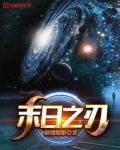Chapter 637 Patch
Zhurong City rotates slowly in the synchronous orbit of Mars.
The centrifugal force generated by this rotation makes the outermost annular cabin produce a standard gravity (simulated).
Since the length of the spiral arm has reached 15 kilometers, the gradient difference caused by the rotation is negligible and will not affect the lives of the new humans and the earth's animals and plants in the standard gravity cabin.
Although Yin Siyong and others synchronized the robot's state, they could still feel the pseudo-gravity brought by the centrifugal force.
After watching the movie, they went to visit the botanical garden.
While admiring the strange plants, a crew member asked quietly: "Captain, are we going back to the moon tomorrow?"
"Back to the moon? No, we're going to the Kuiper Belt."
"Cooper Belt? Rapid mode? That's possible." Michelle reacted immediately.
Yin Siyong nodded: "Headquarters wants us to test the rapid mode and take a look around Gubai."
"No other missions?"
"Of course. We will stay here for another week. The Mars colony is preparing a batch of satellites. We will then drop them into the Kuiper Belt."
Michelle was a little surprised: "Just throw it into the Cooper Belt? No specific positioning is required?"
Yin Siyong shook his head: "Of course not, we are going to take a walk around Gubai Belt, do you understand?"
"Take a walk? I see."
The so-called tour obviously means flying around the entire Cuban Cypress Belt.
In the traditional astronomical field, it is generally believed that the main part of the Kuiper belt extends from the 2:3 resonance region at 39.5 astronomical units to the 1:2 resonance region at 48 astronomical units.
Moreover, the Kuiper Belt is very thin, mainly concentrated in the range of 10 degrees above and below the ecliptic plane, but there are still many celestial bodies scattered in a space several times wider.
All in all, it's less belt-shaped and more like a torus or donut, which means the Kuiper Belt is tilted 1.86 degrees to the ecliptic plane.
For safety reasons, Yin Siyong and a group of crew members began to plan the flight route on the third day of his shift.
Looking at the holographic star map in front of her, the battleship's navigator Harriet pointed to the ecliptic plane of the solar system:
"If we travel along the ecliptic plane, we will have to cross the asteroid belt, the orbital regions of Jupiter, Saturn, Uranus and Neptune, where there are many asteroids, especially tiny ones."
This is also something Yin Siyong is very worried about.
After all, the protection of a space battleship traveling at high speed, even with a magnetic field shield, is not much higher than that of an ordinary civilian spacecraft.
Especially this time they are going to test the rapid mode, when the speed of the battleship will soar to 1,000 kilometers per second, and it will only take 41.6 hours to travel a distance of one astronomical unit.
This speed is much faster than bullets and missiles. If it collides head-on with other objects, the consequences will be unimaginable.
There are many cases on Earth where civil airliners have collided head-on with birds, resulting in many dents on the nose of the airliners.
Even a civil airliner moving at such a slow speed would be damaged by the impact of relative speed, not to mention a spacecraft traveling at a speed of 1,000 kilometers per second.
The headquarters has actually already given some thought to this issue . At this time, the staff of the Mars colony are installing armor and disposable anti-collision reactive armor on the head of the Qinglong-class space battleship.
However, adding armor is only a temporary solution and not a permanent solution.
After all, when the speed reaches 1,000 kilometers per second, no matter how thick the armor is, it will not have much effect.
Therefore, Yin Siyong, who did not want to fail the test, could only find ways to reduce the risks during the navigation process.
"The ecliptic route is indeed too risky. I suggest changing the route." Michelle said as he drew another route on the holographic star map.
This route still starts from Mars, but the direction is no longer along the ecliptic plane. Instead, it first flies perpendicular to the ecliptic plane toward the North Star for one astronomical unit (about 150 million kilometers).
Then change the flight direction, flying parallel to the ecliptic plane towards Cooper.
Fly above the Kuiper Belt and then fly vertically downward one astronomical unit to enter the interior of the Kuiper Belt.
Although doing so will add two astronomical units to the flight distance, safety is increased by dozens of times. After all, the celestial bodies in the solar system are generally concentrated in the ecliptic plane. By avoiding the ecliptic plane, most of the celestial bodies can be avoided.
Yin Siyong thought about it for a while and he also thought this plan was good: "I agree with this plan, but this time the voyage is a bit long, and we need to prepare more spare parts for the lithium-carbon nanolayer."
"Well, after changing the route, the original distance of 43 astronomical units increased to 45 astronomical units." Michelle also had a headache.
You should know that the distance of 45 astronomical units is only the prelude to this journey, and there will be a longer Kuiper belt orbiting mission later.
How long is the Cooper Belt?
According to the formula for the circumference of a circle, the circumference of a circle = diameter of the circle × pi.
It is now known that the Kuiper Belt is 39.5 astronomical units to 48 astronomical units away from the center of the solar system, which is the radius distance.
The diameter is 89 to 96 astronomical units. Multiplying it by pi 3.14, we can calculate that the circumference of the Kuiper belt is approximately 279.46 to 301.44 astronomical units.
According to the maximum speed of their Qinglong-class ship, one astronomical unit takes 41.6 hours, which means more than 10,000 hours, or about 500 Earth days.
And this is the cruising speed at the maximum speed. Obviously, after they enter the Kuiper Belt, they will not be able to move at full speed.
This would mean they would have to sail in the Kuiper Belt for several years.
Even though the nuclear fusion power system does not need to be started in inertial flight mode, it will definitely need to be started repeatedly during the stop-and-go process.
Yin Siyong and others had to carefully calculate how long the nuclear fusion power system would need to run during the voyage. This data was crucial.
But just when they were troubled.
Carl's team contacted them.
In the holographic communication screen.
After listening to Yin Siyong's explanation, Karl smiled and replied: "I can help you solve part of your worries. This is the magnetic field and tail field fine-tuning program."
Suddenly a software installation package was sent over.
"As long as you insert this patch into the intelligent management system of the nuclear fusion power system, the service life of the lithium-carbon nanolayer can be increased by 30-40%."
"Really? That's great." Yin Siyong breathed a sigh of relief.
But Carl warned : "Don't take it lightly. This patch is only for use in areas with less gravitational interference. After you enter the Kuiper Belt, there is a part of the area that is in the gravitational resonance area of Neptune, and the patch may fail."
"I understand. Thank you Dr. Carl for the reminder." Yin Siyong nodded.
A week passed quickly.
The Qinglong-class space battleship where Yin Siyong was located began the final departure inspection.






